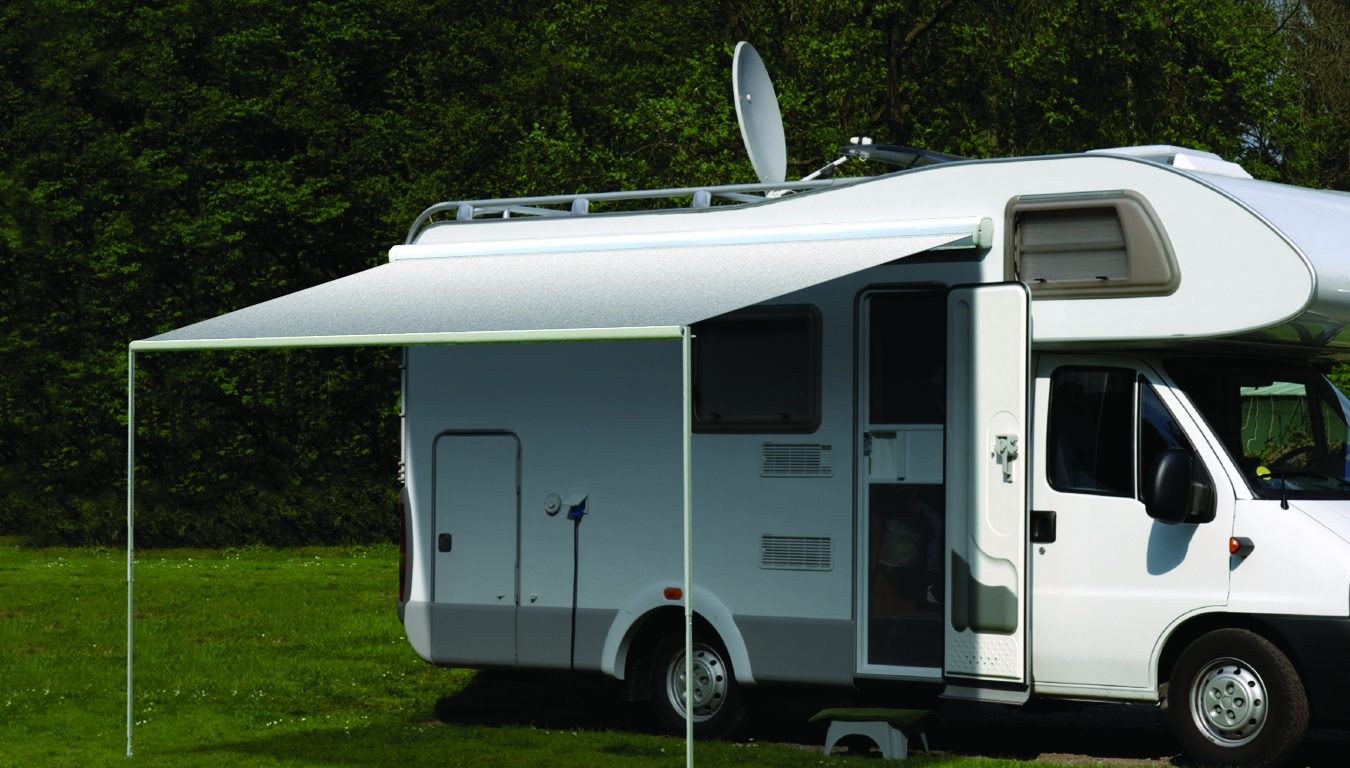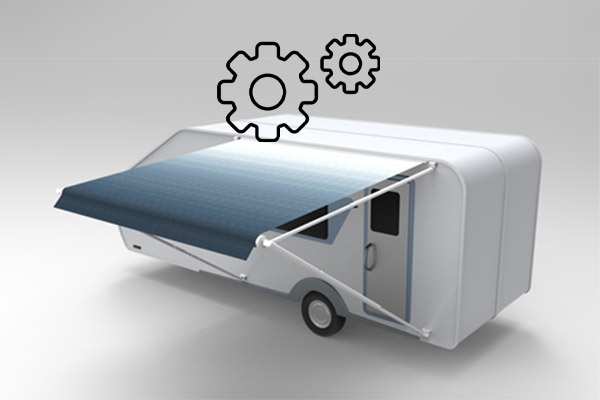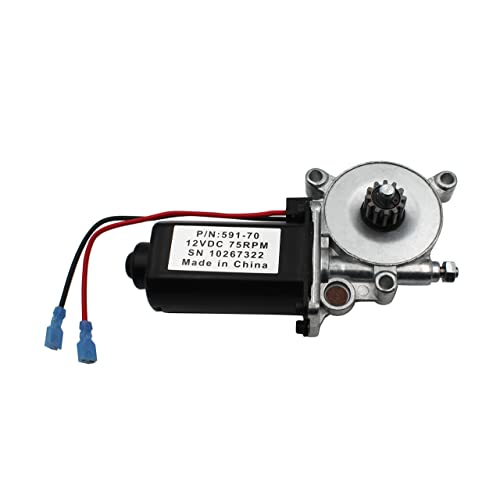RVs are a wonderful way to travel, as you can see the country without leaving the comforts of home. If you’re a full-time RV traveler, though, you’re likely to see many different types of weather. What should you do when severe weather hits like heavy rain? Can you use your awning while it’s raining?
You can use an RV awning in the rain if it is not raining heavily or consistently. However, if water pools up on the awning, it can damage or even rip the fabric. It is best to leave your awning at an angle when it is raining so water can run off of it.
This article will go explain the purpose of an awning and the different types of awnings. It will also discuss different types of severe weather and how to take care of your awning best. If you are in the process of building your van, I hope it will help you choose the best awnings for your van.
The Purpose of an Awning

An awning is designed to increase the space of your RV. When extended, it provides a lovely shaded area to sit and enjoy a cold beverage or to enjoy nature. It is essentially the front porch of your RV.
It’s a nice luxury feature, but it has a practical use too: it protects you from harmful UV rays when sitting outside of the RV.
What Are the Different Types of Awnings?
There are two types of RV awnings, manual awnings, and powered awnings. Both have their pros and cons, and the type you have depends on the model of your RV. However, they are similar in function and design.
Let’s take a closer look at these two types of awnings.
Manual

Manual awnings are held up by two long poles that connect to the side of the RV that are extended to lift the awning above the door.
Manual awnings can be set at different angles, making them ideal to avoid pooling. The downside to these awnings is the physical labor required to put them up. They also can be problematic in strong winds, as they are attached to the RV in a very sturdy manner.
If the awning is up during times of high winds, the wind can catch the awning and pull it away from the RV, or it can cause the entire awning to come off and damage the RV.
Powered

Powered awnings are similar in construction to manual awnings, with a long bar on top and two sidebars. However, they are much easier to extend as they are powered by the electricity of the RV.
Usually, all you have to do to put up a powered awning is press a button.
They are also more lightweight and sometimes have a wind sensor that recognizes when the wind is present and automatically lowers the awning. This can prevent damage to the RV. However, not all powered awnings have sloped settings, so it may be harder to avoid pooling on one.
Can You Use Awnings in Severe Weather?
In your travels, you are likely to come across many different types of weather, so it is essential to know the best way to operate your RV in all conditions to protect both yourself and the vehicle.
You should not use awnings in severe weather conditions, as they could be pulled off your RV and become damaged. It can also cause damage to your RV if the storms are strong enough. It is better to roll up your awning and wait for the severe weather to pass.
Let’s take a look at the different types of severe weather conditions.
Rain

Whether or not you can use your RV in the rain largely depends on how hard it is raining and what kind of awning you have. If it is raining heavily or raining for an extended period of time, you should retract your awning.
If it’s not raining very hard, it is likely safe to use your awning for a limited time.
However, if you are going to use your awning in the rain, your safest bet is to set it to a sloped position, so the water does not pool on the fabric. Pooling water can cause the fabric to warp and even rip.
Wind
If strong winds are present, you should not use your awning, which could cause damage to the awning and even the RV itself.

Some powered awnings have sensors that automatically retract the awning when it detects strong winds, but it is up to the owner’s discretion whether they want to rely on this or play it safe and retract it themselves.
Storms
Thunderstorms are essentially a combination of high winds and heavy rain with the additional threat of lighting. Awnings should never be used during a thunderstorm or in other severe weather such as tornadoes or hurricanes.
Cold
If you are traveling in the winter, be mindful of the cold weather. Snow and ice accumulating on an awning can have the same damaging effects as pooling water. The cold can also make it difficult to retract your awning.
How to Secure your Awning when it’s Raining
If you still want to use your awning during bad weather it is important to secure it to prevent any damage.
Here are some tips you can follow:
- Use tie-down straps: Tie-down straps are an effective way to secure your awning during heavy rain. You can attach the straps to the awning and then anchor them to the ground using stakes or weights.
- Lower one end of the awning: Lowering one end of the awning will create a slope that will allow the rainwater to run off easily. This will prevent any water from pooling on top of the awning.
- Check for leaks: Regularly check your awning for any leaks or damage. This will allow you to fix any issues before they become a bigger problem.
Here’s a Youtube video that shows you how you can keep your RV awnings out in rain and wind with a simple DIY technique using PVC pipes:
 The poles were tested during wind gusts of 21 miles per hour and held up well.
The poles were tested during wind gusts of 21 miles per hour and held up well. The poles provide more stability and support for the awning.
The poles provide more stability and support for the awning. The poles are easy to put up and take down with the help of ratchet straps.
The poles are easy to put up and take down with the help of ratchet straps.
How Should You Store an Awning?
The best way to store an awning is to let it dry completely. If you wash it or it gets wet, let it dry before retracting it. If this is not possible (i.e., an unexpected rainstorm), you can roll it up when it’s wet, but you must be sure to pull it back out and let it dry as soon as possible.
Letting an awning stay stored while it’s wet can lead to mold and mildew issues.
How to Secore Your Awning
There are several good practices to adopt when it comes to your awning:
- Roll it up when you’re away from camp. Excessive exposure to the sun can cause damage over time.
- Make sure you always dry it properly before storing it.
- Avoid using your awning in heavy rain, and if you have to, make sure it is sloped.
- You can invest in equipment such as an awning lock and awning stabilizers.
If you want to discover more details about these practices, check out Outdoormiles.com, they made a great article here.
Final Verdict
It is not impossible to use your awning in the rain, but it is not recommended either. If you get caught in the rain unexpectedly, it most likely will not ruin your awning if you attend to it quickly. However, you should not make it a habit to use the awning in the rain either.
Taking care of your awning will leave it in great condition, and you can enjoy your travels for years to come.
